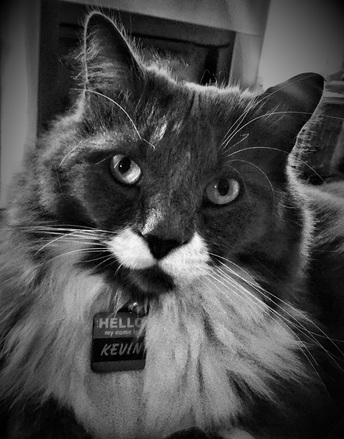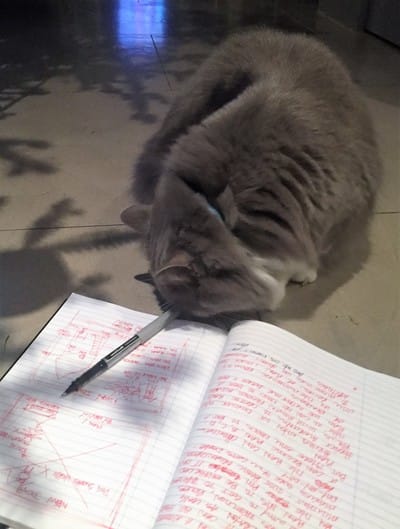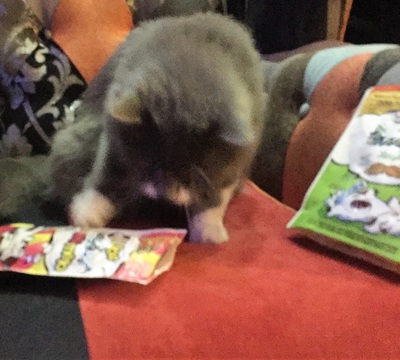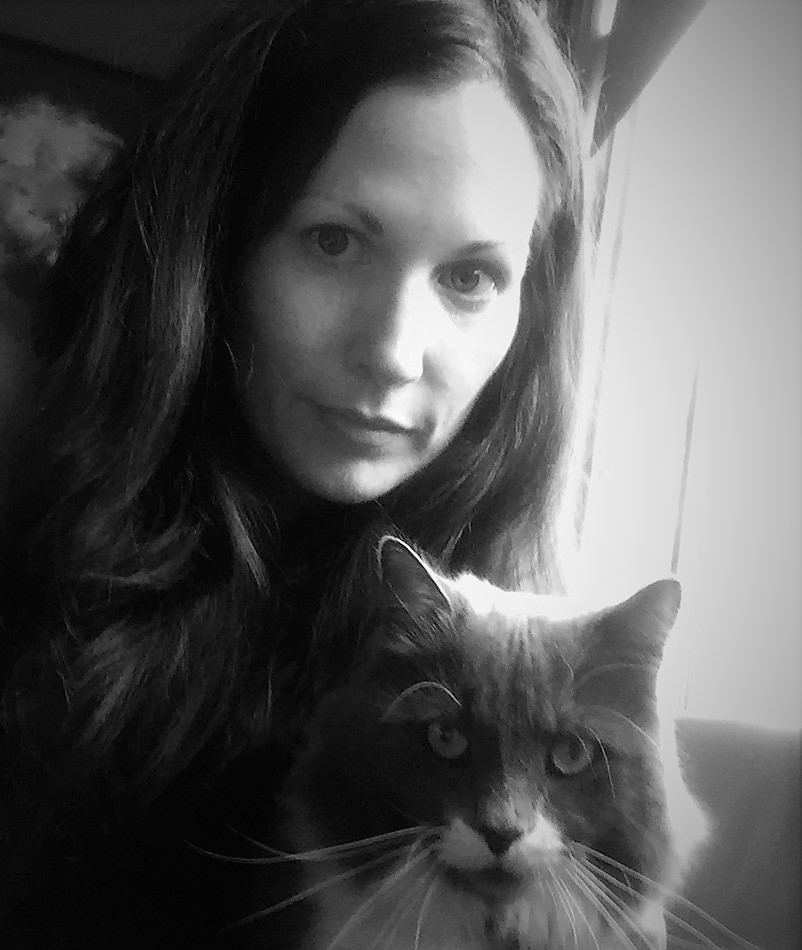|
Kevin and I work on a project with team members from other firms located in different countries. We know that dogs chase tails, cats don't listen to basic commands, and guppies do not speak English. Or any language that we are currently aware of. So how do you get all these animals to collaborate and work with a project plan to achieve a common deliverable? To identify a great advantage of technology, the connectivity of individuals and the global workforce allow us to access a variety of talent. The trick is trying to make sure everyone is available for a meeting when required in varying time zones. There is also understanding the social nuances of cultures. What we find as an amusing opening discussion statement in North America may not seem as amusing to others across the pond. Comments like "slipping one past the goalie" and "diddling it here and there" can be most inappropriate if the context is not wholly understood by all. Weather is a good, safe, universal topic along with quaint children, or pet stories. Politics are not always safe. However, in recent months, it was hard not to speak of Srexit or Frump. (Names of events or individuals have been changed to avoid controversy.) The neutralized issue or personality stance on a collaborative project is delicate. It is not entirely acceptable to single-out a specific wrong doing or doer during the project process. Name blaming doesn't make anyone seem sophisticated or higher than the average emotional intellect of the team. That is the most important item to remember - all are working as a team. Not to say that there isn't a time and place to vent frustrations. We are not above standing up for ourselves or making sure the right individuals know who is really doing what work, but the team needs to be operating effectively for project success. To work effectively, there should be minimal aggravations towards teammates or technical issues. All individuals may not be working in the same office building or for the same company, therefore, the project itself becomes the focused effort. Then there is the organizational chart. Who is to answer to whom and who is responsible for what role based-on fee splits. In a good collaboration, the upper management will have had a discussion regarding acceptable fees for the project elements and allow the game players to proceed without concern about who is paid to do what and work toward the greater good of the project. It only makes everyone look good when the project succeeds. Identifying problem persons which jeopardize the team can be dealt with tactfully without delivering a negative message to the whole project troupe. Negative thoughts perpetuate negative issues. Even beginning to refer to the project as following a successful track and minimizing overall issues will help guarantee the positive perception of the project to the team. Large project issues should not be trivialized, but they are not to be announced to the entire client group or project team. Dwelling on others misery must originate from the sandbox. The need to tell everyone Jimmy fell off the monkey bars, landed on his face, and wet his pants, was to make our own lousy attempts at the monkey bars seem less painful. Time to get over the it and keep what happened in the sandbox beneath the new dirt. Kevin is currently having a weekend getaway for a couple of days over the holiday. He is with new folks and new furry friends. It has been reported that he is not getting along with the other animals, but we aren't going to make a big deal of it. If he comes home fed and without scratches, we will say that his stay was as productive as it could have been considering the circumstances. Next time we will help him make it more successful - we will let him take his favorite chair.
0 Comments
Making an overall project plan.  With the New Year approaching, we start to think about what we want the up-coming year to look like for us. If it has been a rough year with several bumps in the road with work and life, we look for new clean pavement ahead. If it has been a good year, we mourn the loss of past year and anxiously await what will happen over the next few months. New Year's disillusions - not resolutions. I have been prepping Kevin as this is the year of the New Dog. (Note: I am aware it is the year of the Red Chicken, however, City Bylaw does not allow chickens in our inner city dwelling.) Kevin and I need a plan of what having a new member of the household will be like. Sleeping arrangements, introductions, food dish locations, and saying goodbye to the annuals in the backyard. There are things we need to think about before our new arrival. When a project has been conceptualized, and now has the blessing of upper management to proceed, a team is required to produce, deliver, coordinate, and execute - turn the concept into being. There needs to be a master plan or overall project plan to get everyone to the final deliverable and preferably with limited staff and client casualties. In every office there are mad scientists who keeps the entire master plan snuggled in the Borca's area of the brain never to be placed on paper or whiteboard for all to see. It is equivalent to knowing that your team needs to get from where you are standing, through the park and to the store. Only, you don't know the park or on what street the store is located. With a mad scientist, they are the only ones who know where to go and if anyone gets separated from the team, everyone is lost. If you stop and take a bit of time to talk with your team and take a map to see what the most efficient and shortest way to the store is, BEFORE it closes, you will all be successful. An overall project plan contains key milestone dates, major roadblocks or constraints which can affect the outcome, resource ability, availability, interest, and what the deliverable actually is. The information from the overall project plan is to be shared with the team or they will have no idea what their limitations are. After the overall project plan is shared with the team, then the roles of each team member and their expectations can be reviewed. There is a factor of "oops" and "didn't expect that" incorporated into the overall project plan as well. Not exactly "plan B", but the awareness that not all will be precisely executed according to plan. The overall project plan has to be flexible as well - too many unknown factors can disrupt the initial plan, but you have to start somewhere. The popular vision of horizontal management where everyone is equal is a nice concept and can work under specific criteria, however, those perfect conditions are not consistent with every project and they are not the normal. In order for a project to be organized efficiently, someone has to be elected or chosen as the overseer. This person may not be the Project Manager. Team members with the ability to project plan and task manage can be the ones who help create and implement the overall project plan on a daily basis. A plan can be scribbled on a notebook or can be beautified by a graphic department, as long as it is enforced and accepted by upper management and the team it will be a key to project success and give the client confidence that you have their interests under control. The plan should be refered to during the project process to ensure continuity and revised where necessary. This is not a militant element, it is just basic organization. Perhaps when we discover the perfect algorithm for project planning with the human emotional factors included, we will not need the time required to create and implement the plan. In the meantime, Kevin and I will review our New Dog Plan to see that we haven't missed anything...and to plan if the dog sees Kevin as dinner... Candy or other treats in the office. According to science, food provides nutritional support to the body. A tasty sugary treat provides short term emotional support to the body - not nutritional. As Kevin's kitty treats provide him with morsels of happiness, our sweet or savory treats give us our dose of instant medicated pleasure. In trying to resist the colourful and flirtatious advances of the holiday candy at my desk, I think of every reason why their wrapper should not be torn open to reveal their inner treasure. However, at the slightest spike of adrenaline enduced by a one hour deadline, there is no time to think - only to react. My hand lunges for a candy and my fingers furiously paw the crinkly coating unveiling the chocolatey goodness beneath. The satisfaction of the candy is short-lived. My mouth feels soggy and defiled after the sugar infusion diffuses. Only water will dull the aftertaste. 20. min go by and I am cranky that I succumbed to such an impulsive need. 20 min. after that, the candy's twin stares at me with loneliness. "Leave no candy behind!", my tastebuds shout. A co-worker comes along and observes me and my lone tempter. I gleefully point to the candy dish in the center work pod. I am excited that I can bring someone else on my emotional journey to Candyland. The cycle continues throughout the rest of the day. The dish becomes empty with several different hands reaching for their fix.
Food is social. There must have been great rejoice and celebration when Og and Zog brought the Sabertooth home for dinner. There is comfort in the kitchen with the familiar smells of our favourite dishes. There is excitement of exotic meals that monentairly transport us to another place. We have lunch with co-workers to safely talk about uncomfortable issues, we make business deals over brunch, and network over h'dourves. Fruit still vanishes from the office lunch room on Fruit Day supporting the theory that it just isn't the candied treats motivating our emotional desires. I haven't seen a Christmas Veggie Cake, or Carrot Brittle, or Banaimo Bars in the staff kitchen yet, but there is evidence that these too would be eaten by some. The excuse to get out from behind our desk and take a tour about the office and go find a snack is great. Sugar or not, it is about food. Treats or a cup of coffee bought for someone on your team can mean a lot - it is a simple gesture of gratitude and appreciation. Food is a human essential and therefore it is a symbol of life and well being wanting to be shared. Kevin sits back on his hind quarters with his front paws reaching for me when I offer him a treat. I work efficiently to complete my task and walk to the candy jar for my reward. Is this bad reward behaviour? I don't think so. I will just need to practice not reaching for the second one....or third....or fourth.. |
Author(s)Fiona Warren - 17 years experience with large high-profile projects and teams. Archives
April 2018
Categories |

















 RSS Feed
RSS Feed